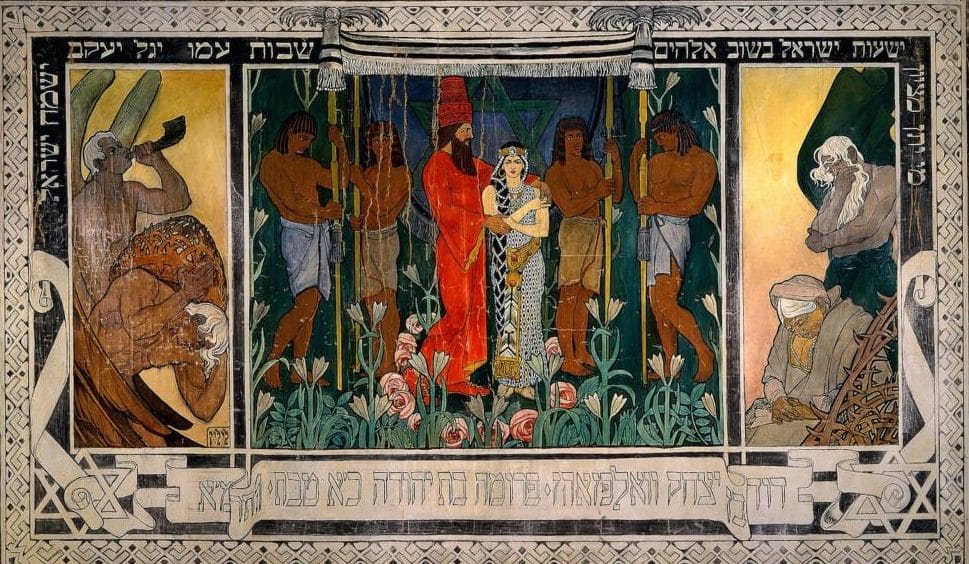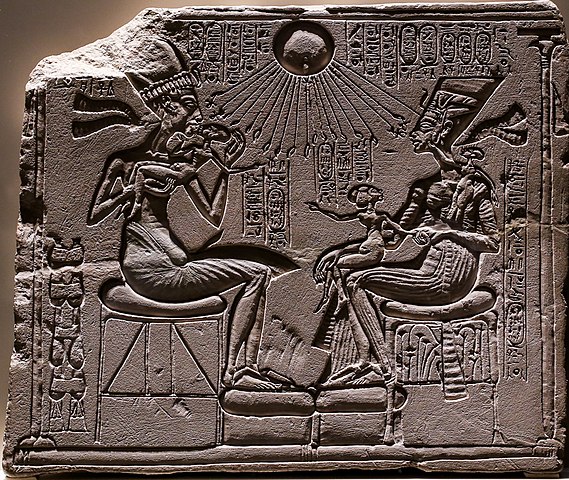This is from the point of view that religion was originally a response to the meteor storm cataclysm of 12,000 years ago, and that it was controlled by the same line of people right through until at least Egyptian times and possibly Greek times.
If religion was controlled by one entity – the scientists who used their knowledge to prove they were in touch with the gods – then it makes sense that they leveraged that, and benefited from it. Regular visits from a priest or shaman could establish trade relations and routes.
So from a business point of view, we know that monopolies are like gold. After having religion in their lives for millennia, it makes sense that – especially with numerous gods in play – there would be offshoots and alternatives and DIY religion popping up now and again. The elders in charge would be constantly reinventing what they offer, and that would evolve to the point where one of the gods would be the dominant superior one. And people would want to be aligned with that champion god, and be aligned with the religious leaders who knew that god.
Evolving further, that dominant god becomes the only god. Monotheism. And that is where we are today with organised, money-making religion. Monotheism. And quite possibly the same people still run it, after 12 millennia.
Given the above as a rough idea of how things panned out, then that helps us work out who were pulling the strings.
Akhenaten tried monotheism first in 14th century BC Egypt, and worshipping just the Sun it didn’t take. Many authors have speculated that this however led to the founding of Judaism, see Wikipedia. Judaism itself isn’t recognised as existing before the 6th century BC, which means a big gap in the timeline. However, Zoroastrianism arrived at the same time, and is also a one-god religion, so it is a reasonable guess that the same forces or influences were behind both.
Akhenaten, we know thanks to a lot of copies on stone tablets, was communicating with many kings of the region. Most of the correspondence was like “where are the gold trinkets you promised me for marrying your cousin”, and there is nothing it them regarding religion, but the level of communications means he could have easily been convinced to go monotheistic by people in another land. So my guess is that it was tried somewhere else at the same time, and Akhenaten copied the idea. It is fair to assume that no evidence of this has been found.
Finding reasons for speculating that the religions of Judaism and Zoroastrianism have a shared background and links to Akhenaten, should be possible if we dig deep enough.
A fore-runner of the Jewish god could be Ba’al, and they could have got that from the Phoenician city-state of Tyre where the god was also known as Melqart. Or, also, Ba’al was the designated Lord of Ugarit.
Ugarit ties in well. It was in what is now Syria, was connected to Cyprus and the Phoenicians, traded with the Egyptians, and dates back to 6000 BC. It could have easily been a base for the elders. Or should I say was almost certainly a base.
Melqart was often shown holding both a lotus flower (drugs) and an axe. They are two of the three recurring symbols of the elders, the other being the bull.
Melqart means “king of the city” and Ba’al was also the lord of Ugarit. Back then it was normal for a city to choose a god, just like US states today have a state flower or bird. There may have been some importance to these cities choosing this particular god, and Ba’al being the forerunner of Yahweh. The easy assumption is that both cities – Tyre and Ugarit – were special bases for the elders. There are actual letters between the kings of each city-state where they discuss helping each other out with ships that are having technical difficulties. So they were under different rules but neighbourly.
The forerunner of Zoroastrianism seems to be the Sintashta culture who were miles away in Russia and Kazakhstan, and became the Aryans. The location does not make much sense, unless they were there for the mining… Wikipedia says:
Sintashta settlements are also remarkable for the intensity of copper mining and bronze metallurgy carried out there, which is unusual for a steppe culture. Among the main features of the Sintashta culture are high levels of militarism and extensive fortified settlements, of which 23 are known.
They also perhaps invented the chariot, an important tool of war.
SUMMARY
One path to monotheism is the Sintashta culture (quite likely they were elders or influenced by the elders because of their mining) > Aryan / Indo-Aryan > Zoroastrianism
The other is from ancient strongholds of Ugarit and Tyre, both who could have influenced Akhenaten. And there is speculation that the sun worship of Akhenaten led to Judaism.

